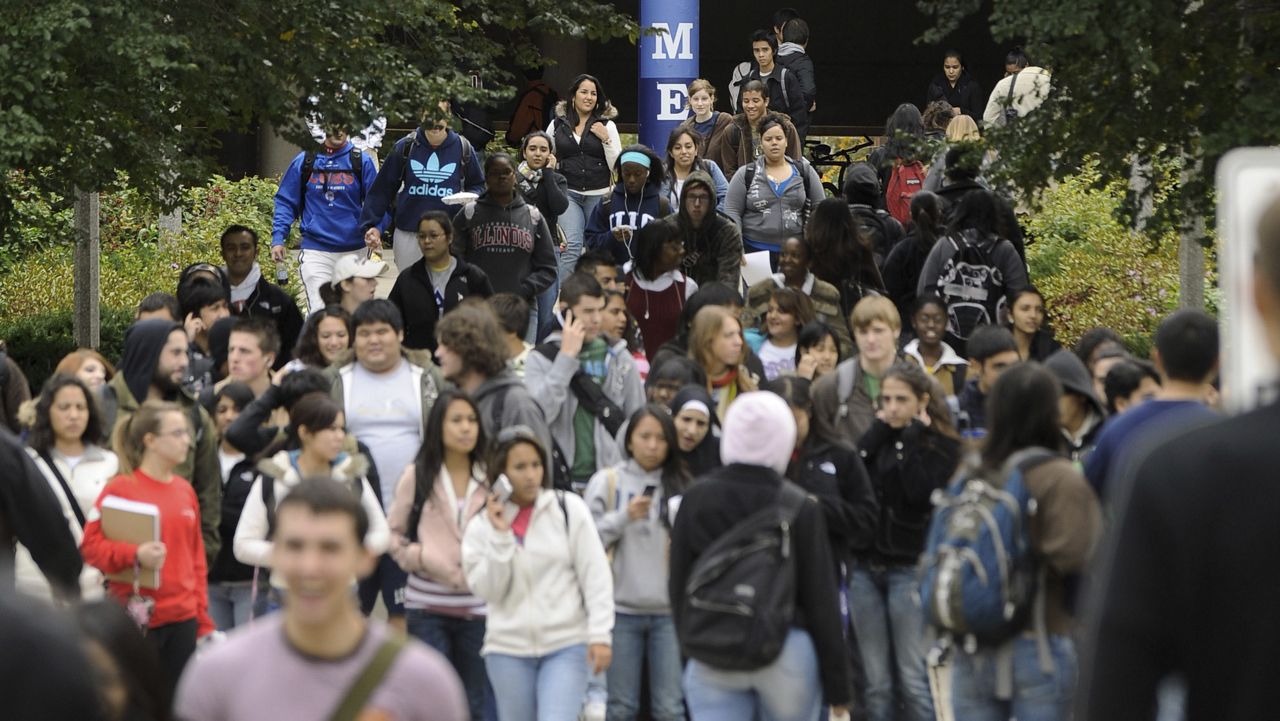The Biden administration on Tuesday took further steps toward canceling tens of billions of dollars in student loan debt.
What You Need To Know
- The Biden administration on Tuesday took further steps toward canceling tens of billions of dollars in student loan debt
- The Education Department held a public hearing on a proposed rule that would create an alternative path to debt relief for many working and middle-class borrowers by expanding the education secretary’s authority under the Higher Education Act
- Also Tuesday, the Education Department released a state-by-state breakdown of the number of borrowers and the total amount of debt being forgiven under a Biden administration action announced last week to discharge $39 billion
- The moves follow the Supreme Court’s ruling last month that the Biden administration lacked the authority to cancel about $400 billion in student loan debt
The Education Department held a public hearing on a proposed rule that would create an alternative path to debt relief for many working and middle-class borrowers by expanding the education secretary’s authority under the Higher Education Act.
Also Tuesday, the Education Department released a state-by-state breakdown of the number of borrowers and the total amount of debt being forgiven under a Biden administration action, announced last week, to correct what it calls “historical failures” in which borrowers did not receive credit for payments made under income-driven repayment plans that would have moved them closer to forgiveness.
The moves follow the Supreme Court’s ruling last month that the Biden administration lacked the authority to cancel about $400 billion in student loan debt.
“We remain committed to the idea that a college credential is one of the best tools for building a stronger America. But we cannot bury the dreams unlocked by college under mountains of unaffordable debt,” Education Under Secretary James Kvaal said at the start of Tuesday’s virtual public hearing. “Through this process we will work swiftly and tirelessly to make that relief a reality for borrowers.”
The proposed rule would amend regulations to allow the education secretary greater power to modify, waive or compromise federal student loan debt.
The new alternative path, which must undergo a federal review and public comment period, could take months to implement, long after the pandemic-related pause on payments is lifted in September.
“Our goal is to provide debt relief to borrowers, particularly those working- and middle-class borrowers who need it most,” Kvaal said. “To recognize that far too many student loan borrowers are left with unaffordable, unreasonable, and unacceptable debts.”
On Friday, the Education Department began notifying more than 800,000 borrowers whose debts total nearly $39 billion that their federal loans will automatically be discharged in the coming weeks.
Many borrowers are eligible for forgiveness if they have made qualifying monthly payments for 20 to 25 years depending on their loan type and income-driven repayment plan. Under the adjustment, the department now gives credit for partial or late payments and periods when borrowers were in forbearance, deferment or economic hardship.
“I have long said that college should be a ticket to the middle class, not a burden that weighs down on families for decades,” Biden said last week.
Borrowers in Texas will benefit more than those in any other state, with nearly 63,730 people receiving $3.09 billion in debt relief, Education Department data showed. Texas is followed by Florida (56,930 borrowers, $3 billion), California (61,890 borrowers, $2.96 billion) and Georgia (38,590 borrowers, $2.13 billion).
Last month, the Biden administration also finalized a new income-driven repayment plan — called the Saving on a Valuable Education, or SAVE, plan — in which borrowers earning less than $33,000 a year do not have to make a loan payment, the monthly amount other borrowers must pay on undergraduate loans is cut in half, loan balances are forgiven after 10 years for borrowers whose original debt was $12,000 or less, and borrowers are assured their balances won’t grow from unpaid interest.
Republicans have accused the Biden administration of trying to circumvent the Supreme Court ruling striking down its earlier attempt to forgive some or all student loan debt for more than 43 million Americans.
“Biden's push for massive student loan debt cancellation is an alarming overreach,” Rep. Michael Burgess, R-Texas, tweeted Monday night. “Ignoring the recent Supreme Court decision and our constitutional framework sets a dangerous precedent.”
Sen. Rick Scott, R-Texas, argued the loan forgiveness is “money he is taking from your [a constituent’s] wallet to bailout other people's debt. It's totally unfair, and it won't fix the issue.”



